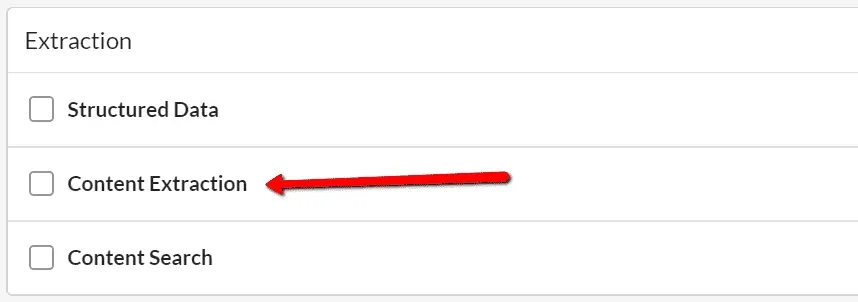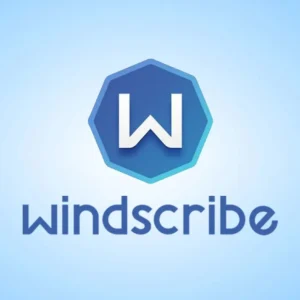In today’s digital landscape, content extraction has become a crucial process for businesses and individuals alike, enabling them to harness valuable information from various online sources. This technique, often referred to as web content extraction, involves using advanced tools to retrieve data efficiently from web pages. By employing effective content scraping techniques, users can streamline their operations and gather insights that drive decision-making. Whether it’s through URL data extraction or other methodologies, knowing how to extract content can significantly enhance your data analysis capabilities. As we delve deeper into this subject, you’ll discover the various strategies and tools that can simplify content extraction, ensuring you stay ahead in the competitive online environment.
When we talk about the process of gathering information from the internet, we often refer to it using terms like data scraping or web data harvesting. These methods facilitate the efficient collection of online data, allowing users to compile and analyze information swiftly. The ability to perform URL data extraction plays a pivotal role in enhancing the effectiveness of this process. Moreover, by mastering content scraping techniques, individuals and organizations can unlock a wealth of insights from vast online repositories. This introduction to the practice of content extraction lays the groundwork for understanding its significance in the realm of data management and analytics.
Understanding Data Scraping Techniques
Data scraping techniques are crucial for anyone looking to extract valuable information from websites efficiently. These methods allow individuals and businesses to gather data from various online sources, including blogs, eCommerce sites, and social media platforms. By employing effective scraping strategies, users can automate the data collection process, saving time and resources while ensuring accuracy in the information extracted.
There are several popular data scraping techniques, each tailored to specific needs and types of content. For instance, web content extraction can be performed using tools like Beautiful Soup for Python, which allows users to parse HTML and XML documents easily. Additionally, users might consider URL data extraction methods that focus on gathering data from specific links, enhancing the overall efficiency of their scraping tasks.
The Importance of Web Content Extraction
Web content extraction plays a pivotal role in analyzing market trends and consumer behavior. By extracting relevant data from various sources, businesses can gain insights into competitors, identify potential customers, and refine their marketing strategies. Content scraping techniques enable users to pull information like product prices, customer reviews, and social media engagement metrics, which are essential for making informed business decisions.
Moreover, web content extraction can aid researchers and academic professionals in compiling data for studies or reports. By utilizing effective scraping tools, they can gather vast amounts of information from scholarly articles, online databases, and statistical resources, allowing them to draw accurate conclusions based on comprehensive data sets.
Effective Strategies for URL Data Extraction
When it comes to URL data extraction, employing the right strategies is essential for ensuring high-quality results. Users can utilize scripting languages like Python or JavaScript to automate the extraction process, targeting specific URLs that contain the desired data. By focusing on a defined set of web pages, individuals can streamline their scraping efforts, reducing the time and effort required to gather relevant information.
In addition, using tools like Scrapy or Octoparse can enhance URL data extraction efficiency. These platforms provide user-friendly interfaces and powerful features that allow users to set up extraction tasks without extensive programming knowledge. By leveraging these tools, users can effectively manage their scraping projects and ensure comprehensive data collection from targeted URLs.
How to Extract Content Efficiently
Extracting content efficiently requires a well-defined approach that incorporates the right tools and techniques. First, users should identify the specific content they need and the websites that host this information. Once the target sites are established, utilizing web scraping frameworks can simplify the extraction process. These frameworks allow users to write scripts that automatically navigate web pages, extract desired content, and store it in a structured format.
Furthermore, optimizing the extraction process involves understanding the website’s structure and identifying the most effective selectors to capture the required data. Techniques such as XPath and CSS selectors can be employed to pinpoint the exact elements on a webpage that need to be extracted, resulting in cleaner and more relevant data sets.
Tools for Content Scraping
There are numerous tools available for content scraping that cater to different needs and skill levels. For beginners, user-friendly software like ParseHub or WebHarvy offers intuitive interfaces for point-and-click scraping, allowing users to extract content without any coding knowledge. These tools often come equipped with built-in data export options, making it easy to store and manipulate extracted information.
For more advanced users, programming libraries such as Beautiful Soup or Selenium provide greater flexibility and control over the scraping process. These libraries allow for custom scripts that can handle complex scraping tasks, such as navigating through multiple pages or extracting data from dynamically generated content. Understanding the capabilities of these tools can significantly enhance the efficiency and accuracy of content scraping projects.
Best Practices for Content Scraping
Implementing best practices in content scraping is crucial for maintaining compliance with legal and ethical standards. Users should always check the website’s terms of service to ensure that their scraping activities do not violate any rules. Additionally, incorporating user-agent rotation and respectful scraping speeds can help avoid IP blocking and ensure that the scraping process runs smoothly.
It’s also essential to structure the extracted data properly. Organizing data into clear categories and formats allows for easier analysis and reporting. By using database management systems or spreadsheets, users can maintain their extracted data efficiently, making it more accessible for future use.
Challenges in Content Extraction
While content extraction is a powerful tool for data collection, it does come with its challenges. One significant hurdle is the ever-changing nature of websites, which can lead to broken scripts and incomplete data extraction. As web pages are updated frequently, maintaining scraping scripts can become a time-consuming task for users.
Additionally, some websites employ anti-scraping measures, such as CAPTCHAs or IP blocking, to prevent automated data collection. Users need to devise strategies to overcome these challenges, such as using proxy servers or employing machine learning techniques to adapt their scraping methods in response to these barriers.
Future Trends in Data Scraping
As technology continues to evolve, so do the techniques used in data scraping. Future trends indicate a shift towards more sophisticated scraping methods that leverage machine learning and artificial intelligence. These advancements will enable users to extract and analyze data more efficiently, adapting to changes in website structures and content dynamically.
Moreover, the integration of big data analytics with content scraping will provide deeper insights into consumer behavior and market trends. With the ability to process large volumes of data quickly, businesses can make more informed decisions and develop strategies that are responsive to real-time data.
The Role of Automation in Content Scraping
Automation plays a crucial role in enhancing the efficiency of content scraping. By automating repetitive tasks, users can focus on analyzing the extracted data rather than spending hours on manual scraping. Tools that support scheduling and batch processing can significantly reduce the workload, allowing users to gather data from multiple sources simultaneously.
Furthermore, automated scraping solutions can be programmed to adapt to changes in web page layouts, ensuring that the data extraction process remains consistent over time. This flexibility not only saves time but also improves the accuracy of the data collected, making automation a vital component of modern content scraping practices.
Frequently Asked Questions
What is content extraction and how is it related to data scraping?
Content extraction refers to the process of retrieving specific data from various sources, such as websites, documents, or databases. It is closely related to data scraping, which involves using automated tools to collect large amounts of data from web pages, allowing users to extract content efficiently.
What are the best content scraping techniques for web content extraction?
Some of the best content scraping techniques include using web scraping libraries like Beautiful Soup and Scrapy in Python, employing browser automation tools like Selenium, and utilizing APIs provided by websites for structured data extraction. Each method can be tailored based on the complexity of the content and the structure of the website.
How can I perform URL data extraction effectively?
To perform URL data extraction effectively, start by identifying the target URL and the specific data you want to extract. Use web scraping tools or scripts to fetch the page content, parse the HTML to locate the desired elements, and then extract the relevant data. Ensure to follow ethical scraping guidelines and respect the website’s terms of service.
What are the common challenges in content extraction and how can they be overcome?
Common challenges in content extraction include dealing with dynamic content, CAPTCHA protections, and changing website structures. These can be overcome by using headless browsers to render JavaScript content, implementing CAPTCHA solving services, and regularly updating your extraction scripts to adapt to website changes.
How to extract content from a specific post URL?
To extract content from a specific post URL, use a web scraping tool or a custom script. Fetch the HTML content of the URL, identify the HTML tags containing the data you want (like <h1>, <p>, or <div>), and then parse and extract that information. It’s important to ensure compliance with the website’s scraping policies.
| Key Points |
|---|
| Content Extraction is a process that involves gathering relevant information from various sources, often from web pages, articles, or databases. |
| This process is vital for businesses and individuals looking to compile data for analysis, reporting, or content creation. |
| Techniques for content extraction include web scraping, API data retrieval, and manual data collection. |
| Content extraction tools and software can automate the process, improving efficiency and accuracy. |
| Ethical considerations must be taken into account, such as copyright laws and the terms of service of the websites being scraped. |
Summary
Content extraction is essential for efficiently gathering relevant information for various purposes. By utilizing effective techniques such as web scraping and automation tools, businesses and individuals can streamline their data collection processes. However, it’s important to conduct content extraction ethically to avoid legal issues and respect the source’s rights.










